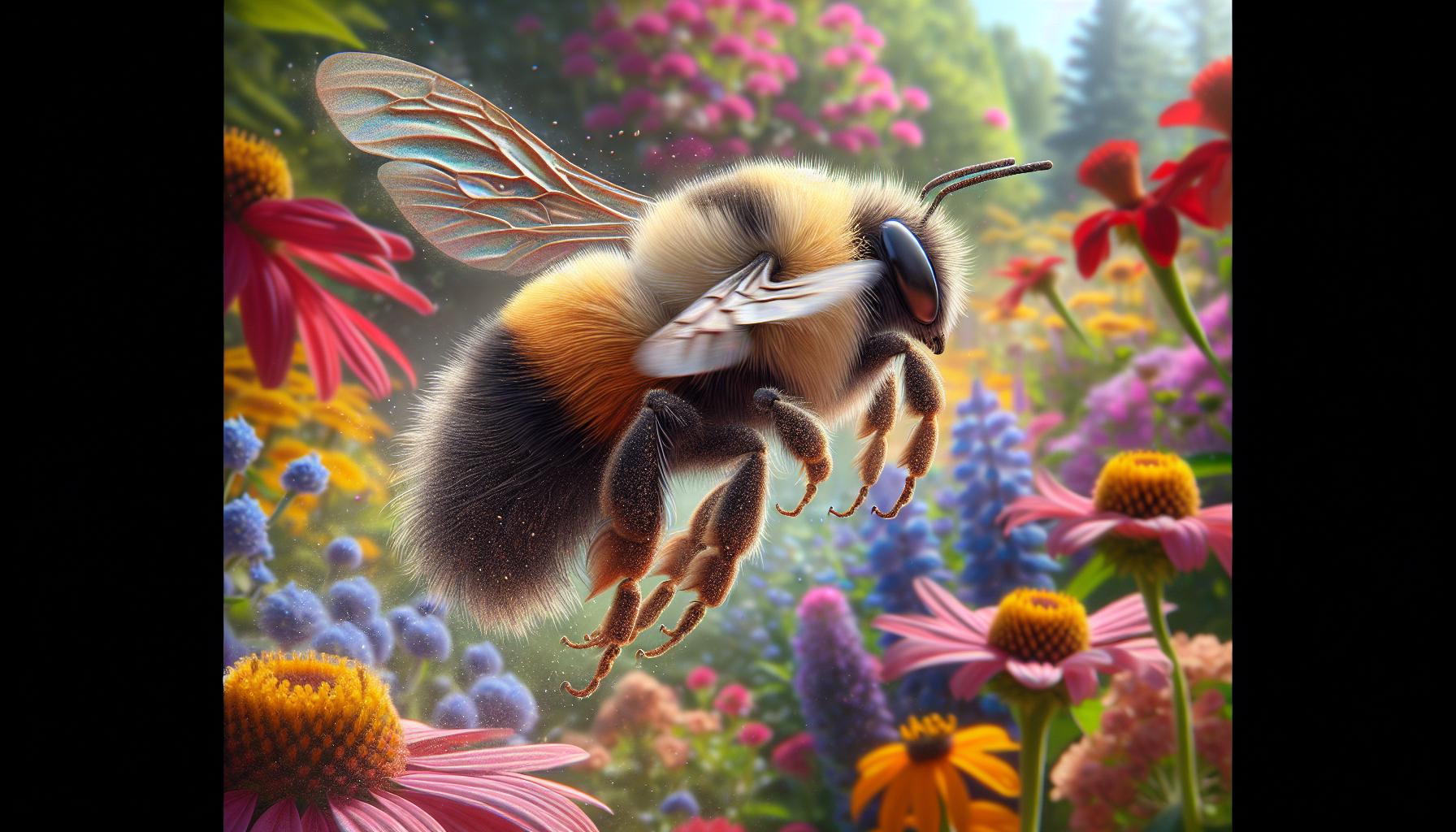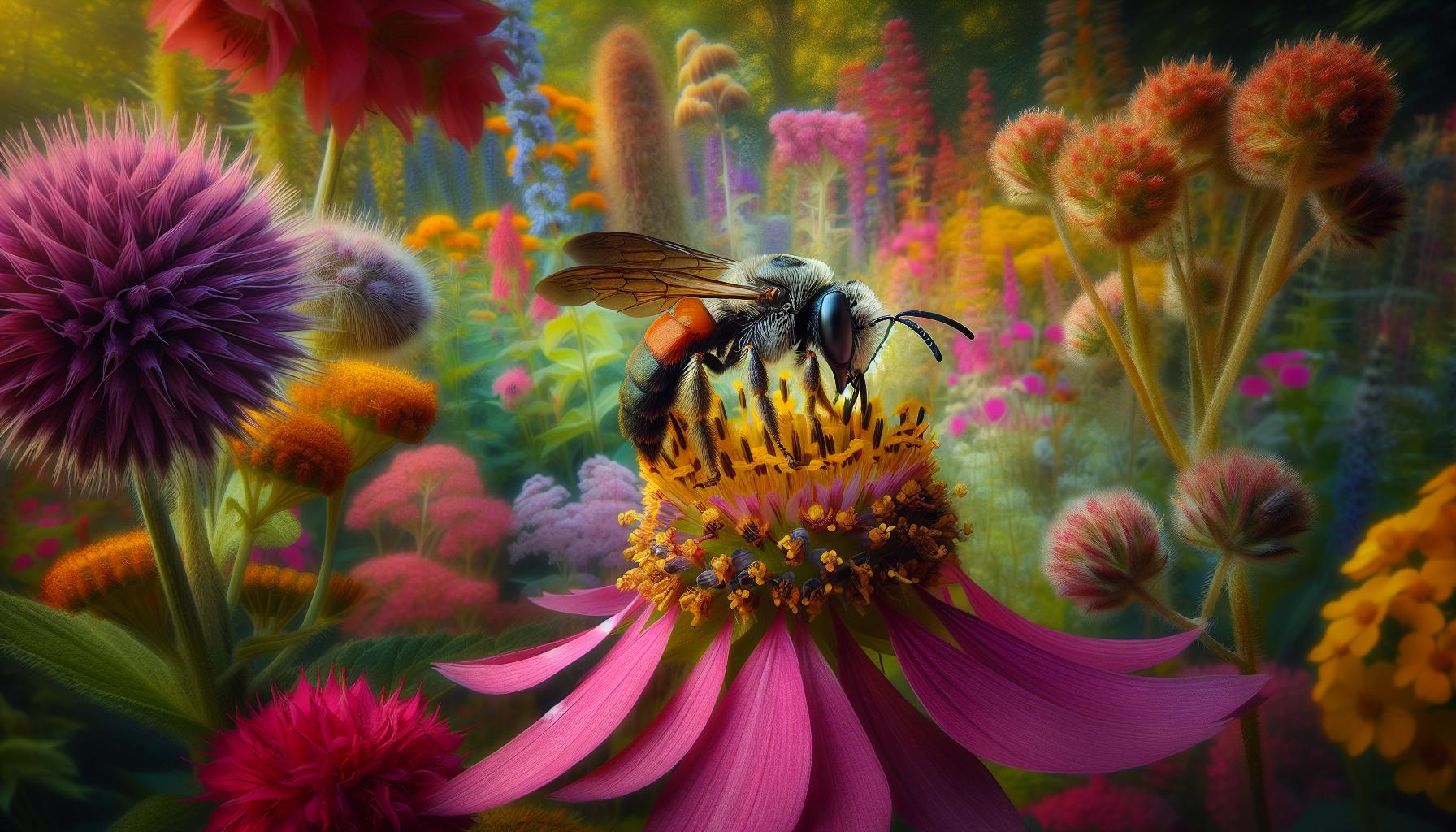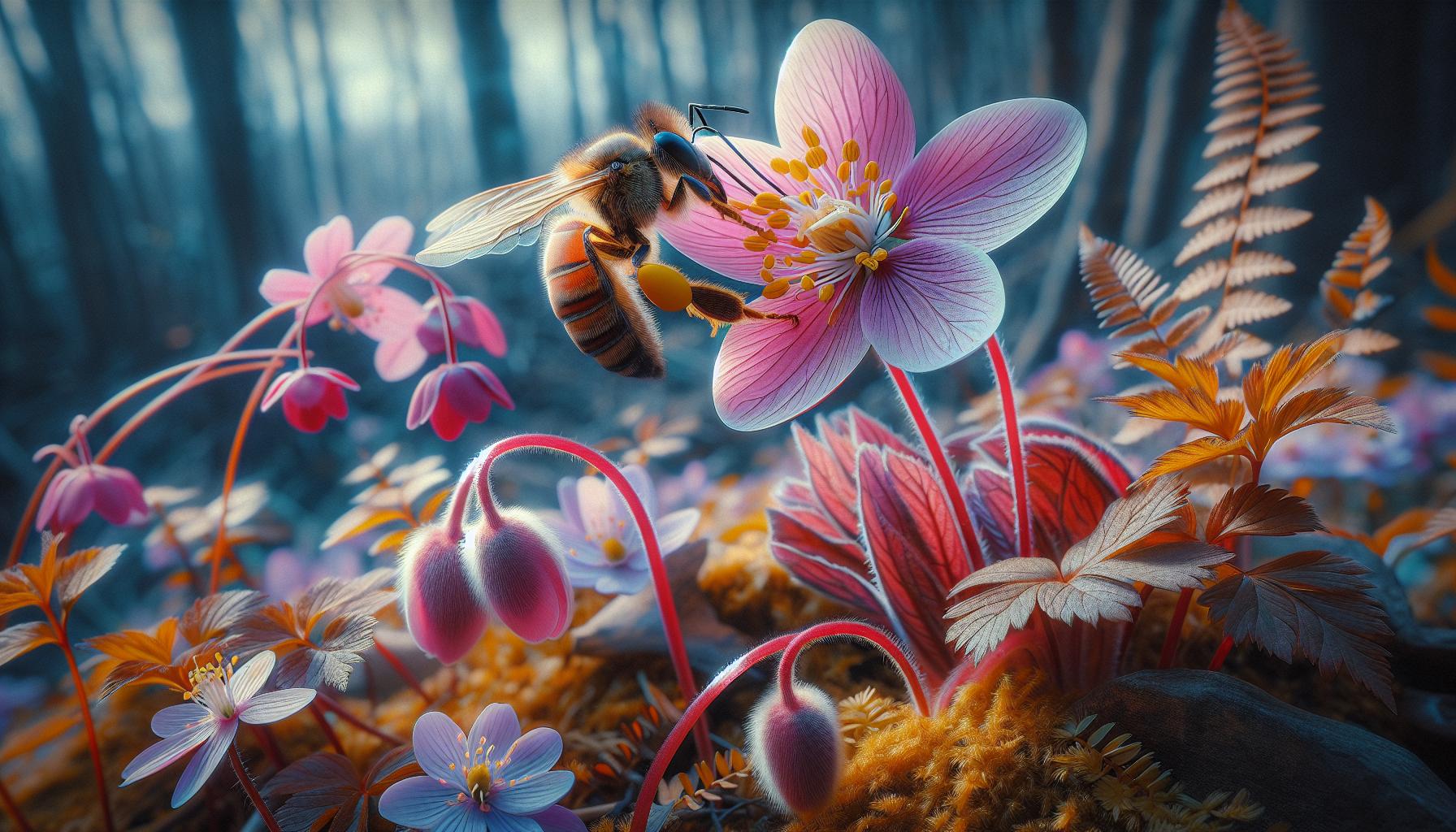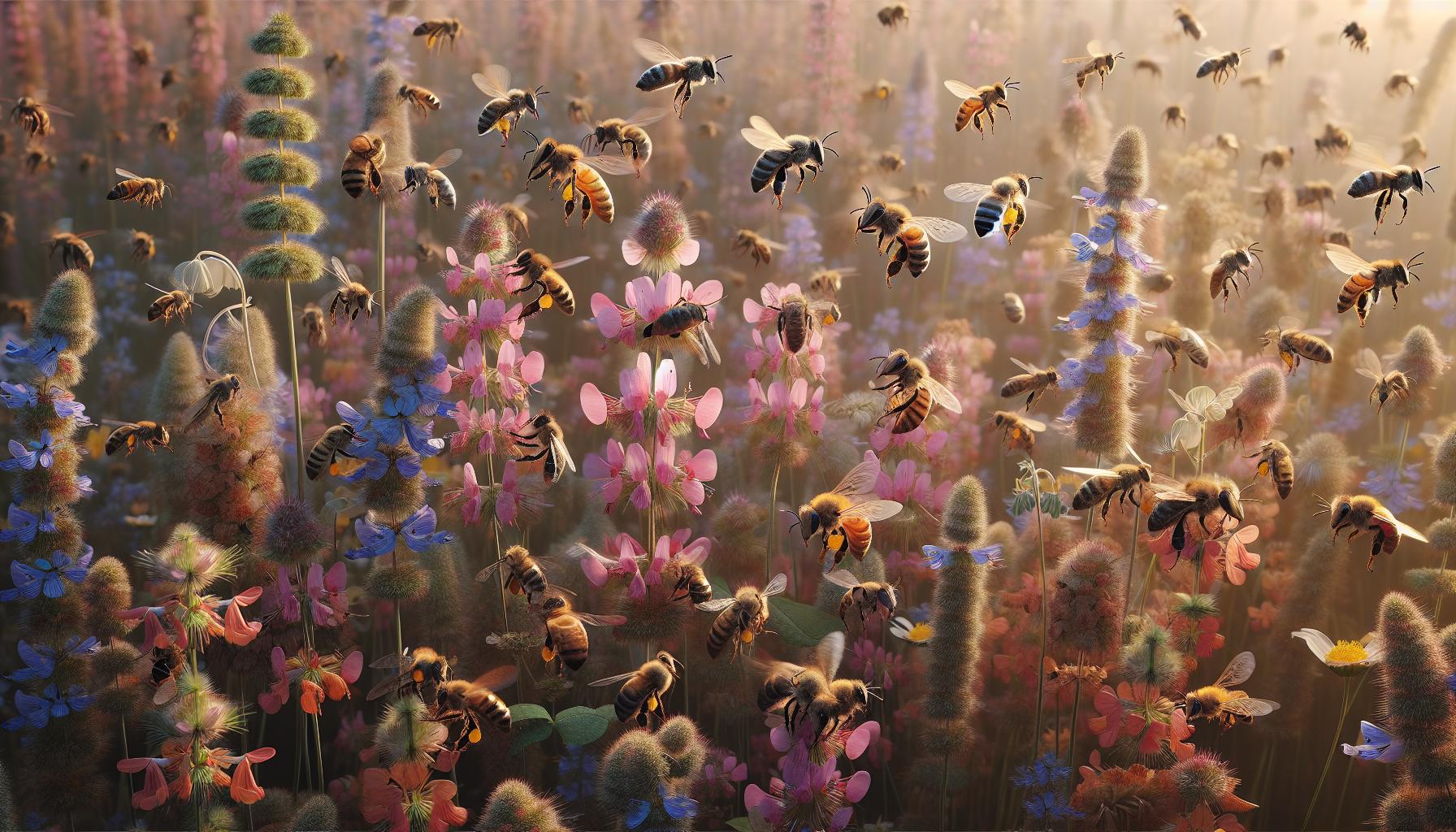Ontario’s buzzing with a diverse array of bee species, each playing a pivotal role in our ecosystem. These tiny workers are fundamental to our natural world, from pollinating plants to ensuring the growth of delicious fruits and vegetables. You might be surprised to learn how many bees call Ontario home.
Diving into the world of bees, you’ll discover fascinating differences in appearance, behaviour, and habitats. Whether it’s the industrious honeybee, the solitary mason bee, or the bumblebee with its distinctive buzz, Ontario’s bees are as varied as they are vital. Let’s embark on a journey to uncover the myriad types of bees thriving in Ontario’s backyards, gardens, and wilds.
Types of Honeybees in Ontario
When exploring the bustling world of bees in Ontario, honeybees stand out as both famous and fundamental to our ecosystem. Originating from Europe, these industrious insects have become integral to agriculture and natural landscapes across the province.
Honeybees are social beings, living in large colonies that can house thousands of individuals. Each colony is a complex society with a singular queen, numerous drones, and a multitude of worker bees. These workers play a crucial role in pollination, travelling from flower to flower and ensuring the production of crops and wild plants alike.
One fascinating aspect of honeybees in Ontario is their adaptability. They thrive in a variety of environments, from the outskirts of forests to urban backyards. This adaptability is paramount for their survival and the continuation of their pollination services, which significantly impact Ontario’s agricultural success.
Importance of Honeybees
Honeybees contribute immensely to Ontario’s ecosystem through their pollination activities, which benefit a wide range of plants including many fruits and vegetables. The province’s agriculture sector heavily depends on their labor to ensure crops flourish and yield produce.
Furthermore, honeybees produce honey, propolis, and beeswax, valuable products used in food, cosmetics, and medicines. Their economic contribution, however, is dwarfed by the invaluable ecological services they provide, making them key players in maintaining biodiversity and ecological balance.
Challenges Facing Honeybees
Despite their importance, the different types of bees in Ontario face several challenges including habitat loss, pesticide exposure, and diseases. These threats not only endanger honeybees but also pose a risk to the broader ecosystem and agricultural productivity. Creating bee-friendly spaces and reducing pesticide usage are vital in supporting healthy honeybee populations.
Understanding the role and challenges of honeybees in Ontario highlights the interconnectedness of our ecosystem and the need for sustainable practices to preserve these crucial pollinators. Their well-being is intricately linked to our environmental health and food security, making their protection a priority for all.
Bumblebees: The Fuzzy Pollinators

When exploring the diverse types of bees in Ontario, you can’t overlook the charming bumblebees, easily recognised by their large, fuzzy bodies that buzz busily from flower to flower. Unlike their honeybee cousins, bumblebees have a more robust build and a distinctive, fluffy appearance that endears them to many.
Bumblebees are vital pollinators in Ontario’s ecosystem, playing a crucial role in supporting the growth of many plants and crops. Their method of pollination, known as buzz pollination, is particularly effective for certain flowers that other insect pollinators struggle with. This unique technique involves the bumblebee grabbing onto a flower and vibrating their body rapidly to dislodge pollen, a method not only fascinating but essential for the reproduction of various plant species.
In Ontario, there are over 15 species of bumblebees, each with its own habits and preferences, yet all contribute significantly to pollination. Some of the common species you might encounter include:
- The Common Eastern Bumblebee
- The Tri-Coloured Bumblebee
- The Red-Belted Bumblebee
These species thrive in a variety of habitats, from urban gardens to wild meadows, making them a common sight throughout the province. Their adaptability and broad diet make them a cornerstone species for pollination, especially in areas where other pollinators are scarce.
Despite their importance, bumblebees face numerous threats including habitat loss, pesticide exposure, and climate change, which can all impact their numbers and health. This highlights the need for conservation efforts focused on preserving natural habitats and fostering garden environments that support these fuzzy pollinators. By planting native, pollen-rich flowers and reducing pesticide use, you can help ensure that bumblebees continue to play their vital role in Ontario’s ecosystem.
Solitary Bees: Encountering the Mason Bee

In your journey to understand the types of bees in Ontario and diverse bee populations, you’ll surely be intrigued by the mason bee, an essential yet often overlooked pollinator. Unlike their bumblebee cousins, mason bees lead solitary lives, a fact that significantly influences their behavior and the role they play in our ecosystem.
Mason bees, particularly noted for their exceptional pollination abilities, are solitary creatures. This means they don’t live in hives or colonies but instead, each female mason bee constructs her own nest. They commonly use hollow stems or holes in wood, meticulously sealing their offspring in with mud.
What sets mason bees apart is their remarkable efficiency at pollination. One mason bee can pollinate what would take about 100 honeybees to accomplish. This high level of efficiency is crucial for the pollination of spring crops and flowers, making them invaluable allies in Ontario’s diverse ecosystem.
Why Are Mason Bees Important?
- Pollination Powerhouses: Given their pollination efficiency, mason bees play a critical role in the growth of many plants and crops, contributing significantly to local agriculture and the beauty of our natural landscapes.
- Eco-Friendly: These bees are non-aggressive and rarely sting, making them excellent garden companions. Their solitary nature and preference for natural nesting sites also encourage eco-friendly gardening practices.
Supporting Mason Bee Populations
To support these beneficial insects, consider setting up bee hotels or leaving natural garden debris during winter. Planting native flowers that bloom early in the season can also provide necessary nourishment right when these bees emerge. By making small changes in how we manage our gardens and local spaces, you can contribute to the thriving population of mason bees in Ontario, ensuring the continued prosperity of our local ecosystem and agriculture.
Specialist Type of Bees in Ontario

In Ontario’s diverse ecosystems, specialist bees play a crucial role. Unlike their generalist counterparts, these bees have evolved to rely on specific plants for nectar and pollen. This unique relationship not only underscores the delicate balance of nature but also highlights the importance of biodiversity in our local environments.
Squash Bees are one such example, with a preference for the blossoms of squash and pumpkin plants. These bees have become indispensable pollinators for both commercial crops and backyard gardens. Emerging at dawn to visit flowers, squash bees ensure a successful harvest by efficiently pollinating these plants.
Another noteworthy specialist is the Spring Beauty Bee, which as its name suggests, is drawn exclusively to the Spring Beauty flower. This bee’s life cycle is tightly synced with the blooming of its preferred plant, demonstrating a remarkable example of co-evolution. The presence of Spring Beauty Bees is a sign of a healthy ecosystem, showcasing the intricate connections that sustain our native flora and fauna.
To support these specialist bees, consider the following actions:
- Plant a diversity of native plants that bloom at different times of the year
- Avoid the use of pesticides in your garden
- Leave areas of bare soil and natural debris for nesting habitats
By fostering environments that cater to the needs of specialist bees, you’re not only aiding in their conservation but also ensuring the resilience of our local ecosystems. These bees’ reliance on specific plants makes them vulnerable to habitat loss and environmental changes, making conservation efforts all the more critical. Engaging in these practices supports not just specialist bees but the broader network of pollinators vital to Ontario’s ecological health.
Threats to Ontario’s Bee Population

Ontario, home to a diverse range of bee species, faces several threats that endanger its vital bee populations. Understanding these threats is crucial for implementing effective conservation strategies.
Habitat Loss stands as a significant challenge. As urban areas expand and agricultural practices intensify, natural habitats for bees, including meadows and forests, are rapidly declining. This loss of habitat not only reduces the availability of nectar and pollen sources but also impacts bees’ nesting opportunities, crucial for their survival and reproduction.
Pesticide Exposure is another critical threat. While pesticides are widely used in agriculture to control pests, their indiscriminate application can harm non-target species like bees. Neonicotinoids, in particular, have been linked to colony collapse disorder and declines in bee populations. These chemicals affect bees’ ability to navigate and forage, ultimately decreasing their chances of survival.
Climate Change also poses a significant risk to bee populations in Ontario. Rising temperatures and shifting weather patterns can disrupt floral blooming times, leading to temporal mismatches between bees and their food sources. Such mismatches can have profound effects on bee nutrition and, by extension, their ability to thrive and reproduce.
To safeguard Ontario’s bees, it’s imperative to address these threats head-on. Whether by supporting policies that protect natural habitats, advocating for sustainable agricultural practices, or taking individual actions to reduce pesticide usage, every effort counts. Understanding the specific needs and challenges faced by both common and specialist bees enhances our ability to implement targeted conservation practices.
Conclusion
Understanding the diverse challenges Ontario’s bees face is the first step towards safeguarding their future. By recognising the different types of bees in Ontario and the critical role habitat preservation, sustainable agriculture, and reduced pesticide use play, you’re equipped to contribute to their protection. Every action counts, from supporting local conservation efforts to choosing bee-friendly plants for your garden. Let’s work together to ensure these vital pollinators thrive for generations to come. Your awareness and actions can make a real difference in the battle to protect our bees.
Frequently Asked Questions (FAQ)
What are the main threats to Ontario’s bee population?
The primary threats include habitat loss, pesticide exposure, and climate change. Urban expansion and intensive agriculture diminish natural habitats, pesticides impair navigation and foraging abilities, and climate change alters the timing of floral blooms.
How does urban expansion affect bees?
Urban expansion leads to habitat loss, reducing the availability of food sources and nesting sites for bees. This diminishes bee populations by impacting their ability to survive and reproduce.
What role do pesticides play in bee decline?
Pesticides, particularly neonicotinoids, are harmful to bees. They affect bees’ navigation and foraging skills, leading to decreased bee populations due to their impaired ability to gather food and sustain the hive.
How does climate change impact bees?
Climate change disrupts the timing of floral blooms, which can lead to mismatches between when flowers produce pollen and nectar and when bees need these resources. This affects bee nutrition and survival.
What can be done to protect Ontario’s bees?
To protect bees, it is crucial to preserve their natural habitats, promote sustainable agriculture practices, and reduce the use of harmful pesticides. Understanding and addressing the specific challenges faced by both common and specialist bees is essential for effective conservation efforts.


